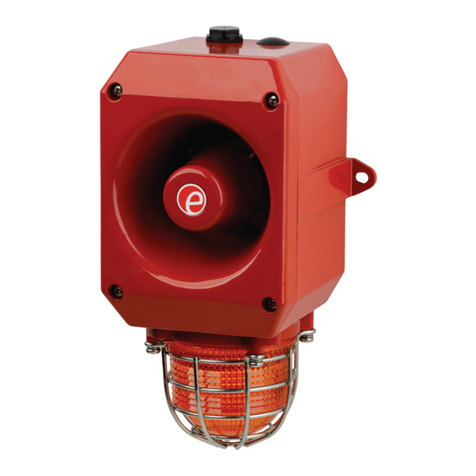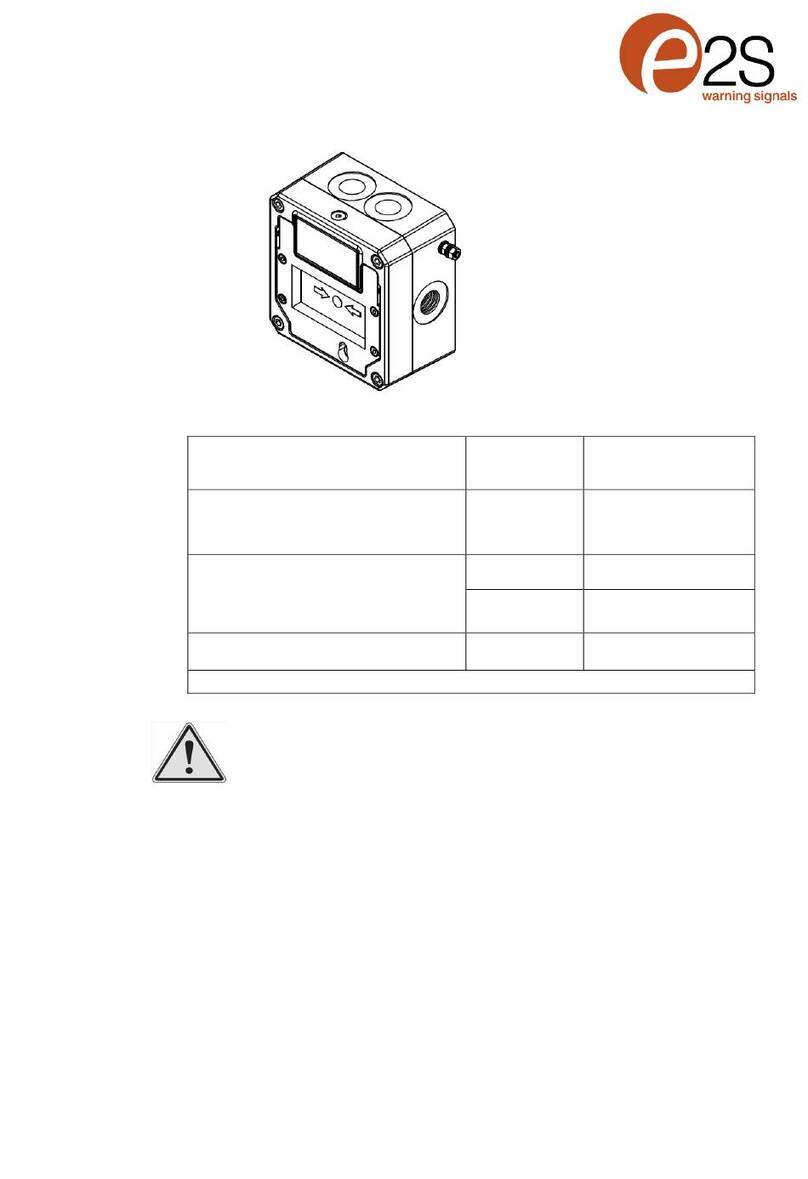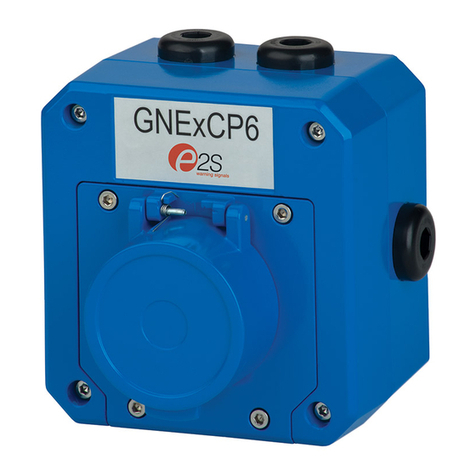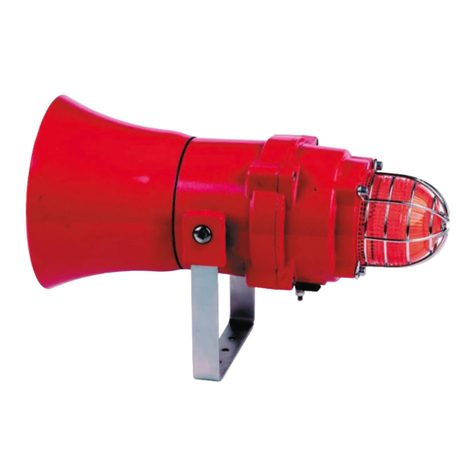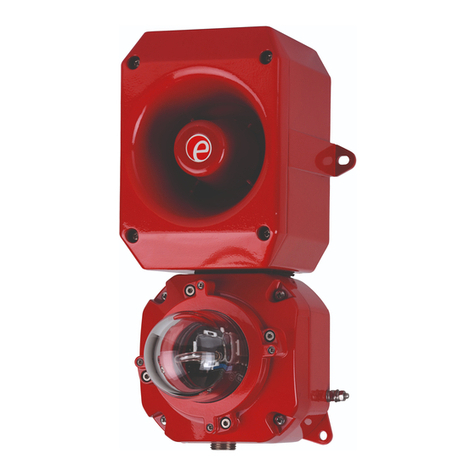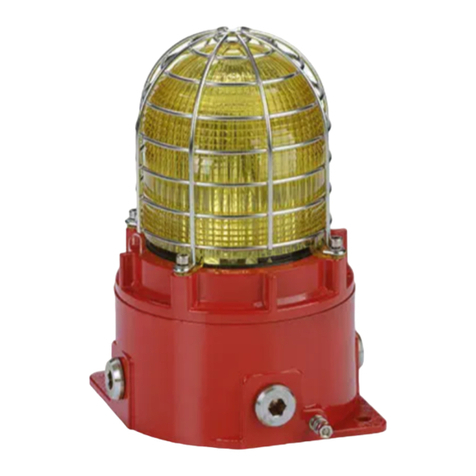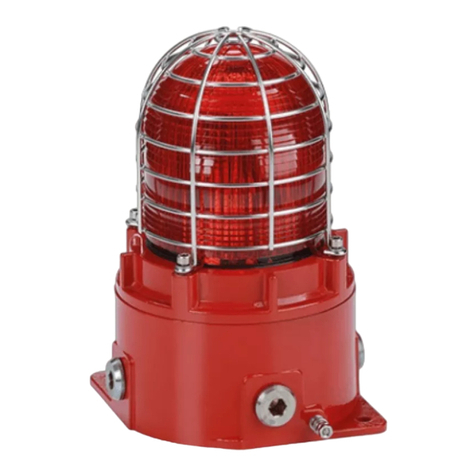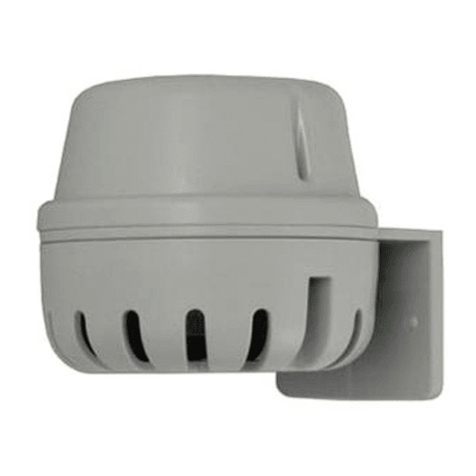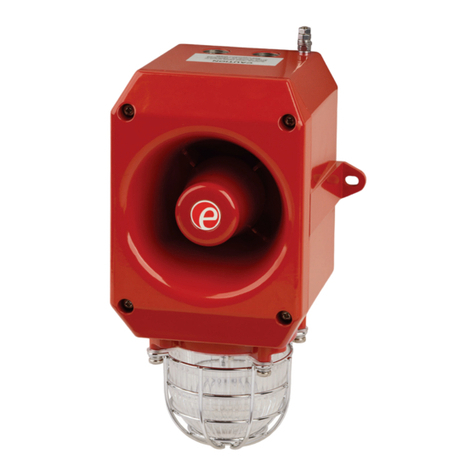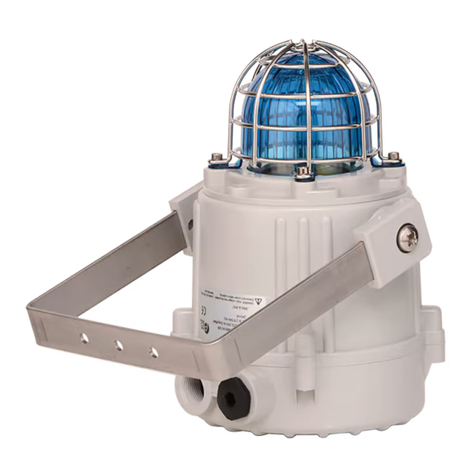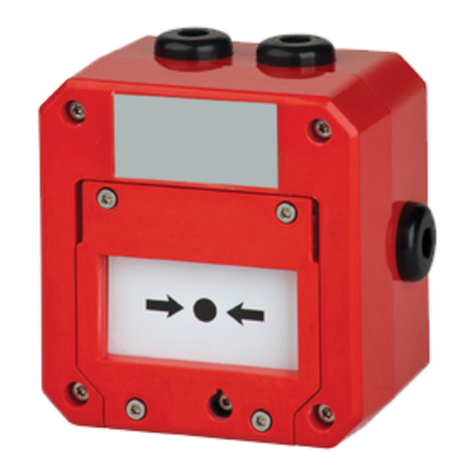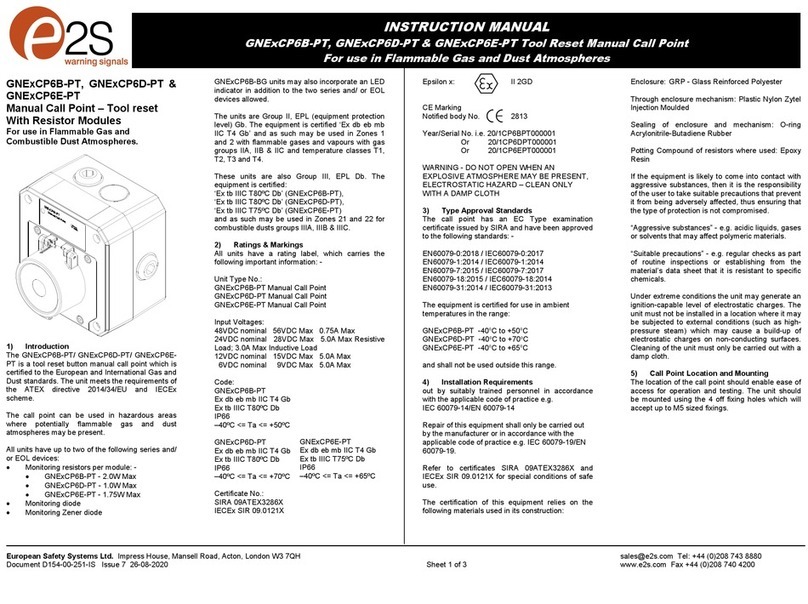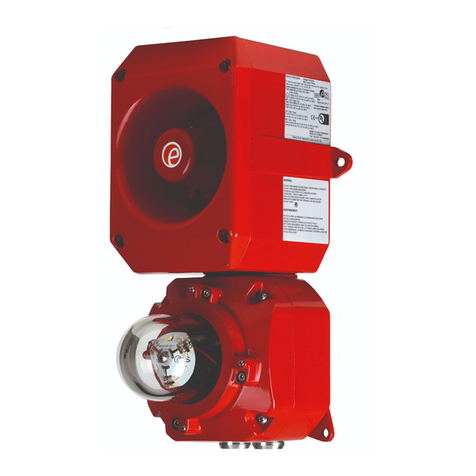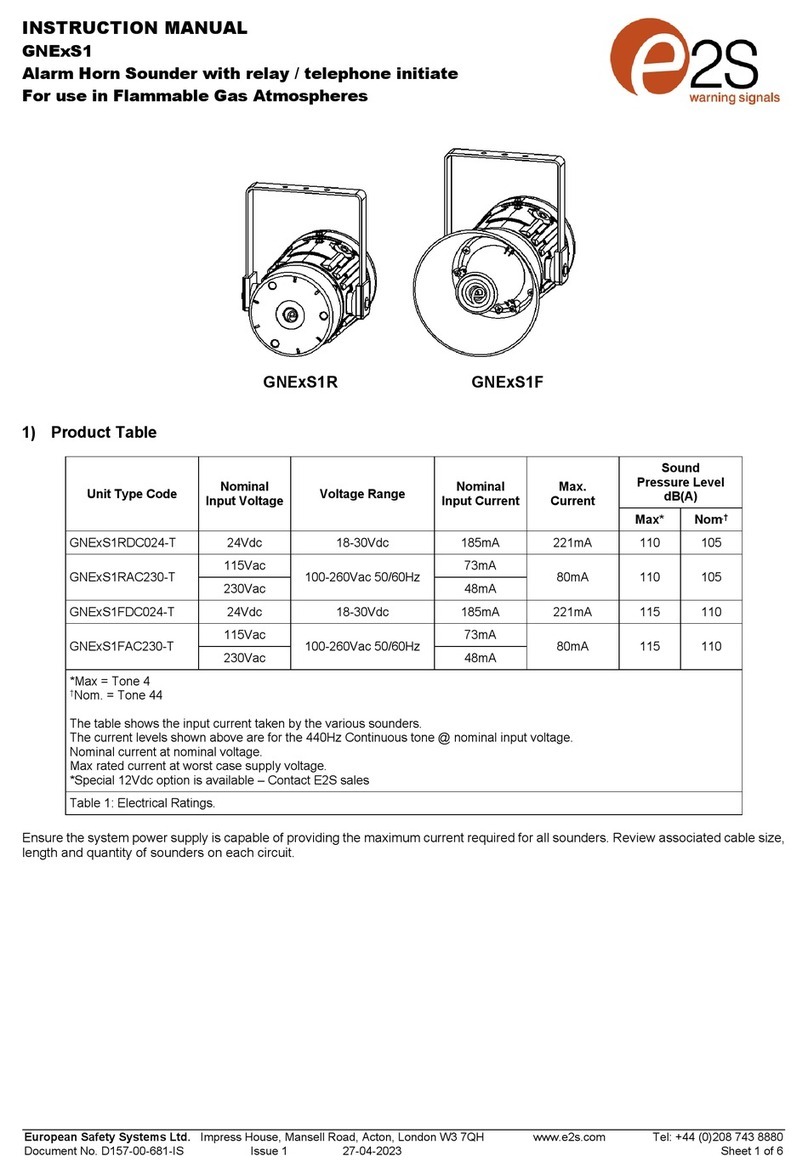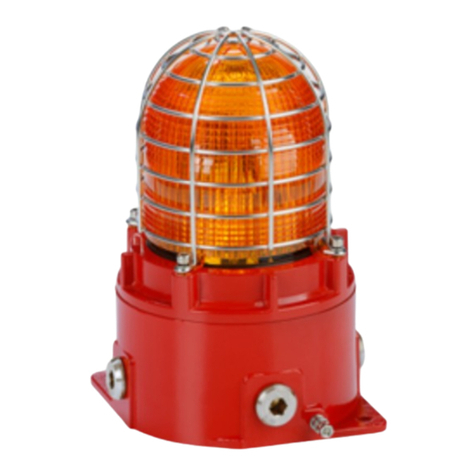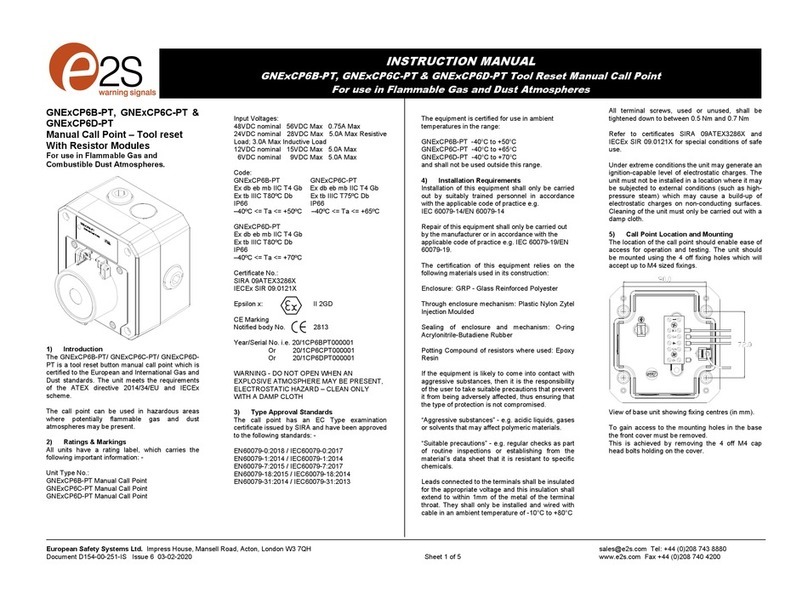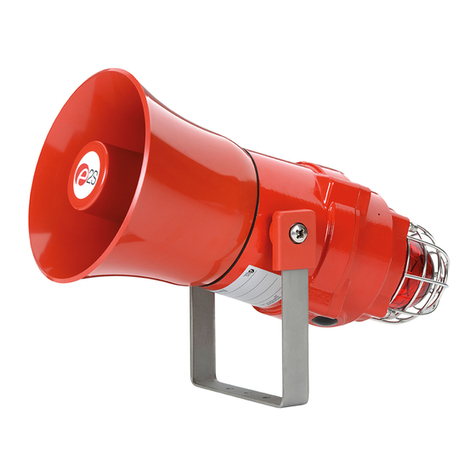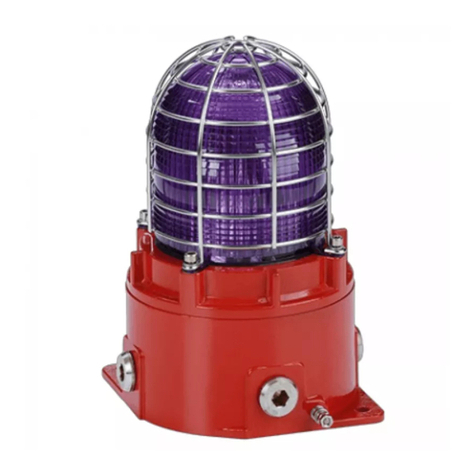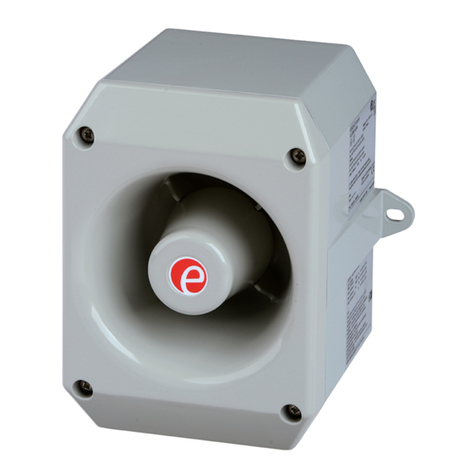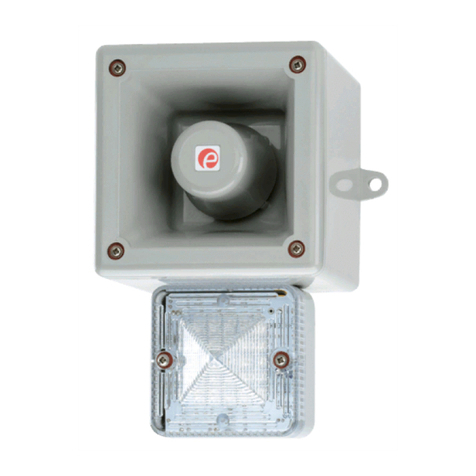
__________________________________________________________________________________________________________________
European Safety Systems Ltd. Impress House, Mansell Road, Acton, London W3 7QH sales@e2s.com Tel: +44 (0)208 743 8880
www.e2s.com Fax: +44 (0)208 740 4200
Document No. D190-00-061-IS-SC Issue: 318-01-21 Sheet 2 of 6
Assembly
4) Installation
4.1 Safe Installation Requirements
The product must only be installed by suitably qualified
personnel in accordance with the latest issues of the relevant
standards.
The installation of the units must also be in accordance with
the NEC / CEC and any local regulations and should only be
carried out by a competent electrical engineer who has the
necessary training.
For ambient temperatures over +50ºC the cable entry
temperature may exceed +70ºC / the cable branching point
may exceed 80ºC. Therefore suitable heat resisting cables and
cable glands must be used, with a rated service temperature of
at least 90ºC.
To maintain the ingress protection rating and mode of
protection, the 2-off M20 and 1-off M20/NPT cable entries must
be fitted with suitably rated cable entry and/or blanking devices
during installation. If a high IP (Ingress Protection) rating is
required then a suitable sealing washer must be fitted under
the cable gland. A minimum ingress protection rating of IP54
must be maintained.
Only the flame proof cover is to be used for access to the
enclosure for installation, service and maintenance.
Connections are to be made into the terminal blocks using
solid or stranded wire, sizes 0.5-2.5mm2/ AWG 20-14. Wire
insulation needs to be stripped 6-7mm. Wires may be fitted
securely with crimped ferrules. Terminal screws need to be
tightened down with a tightening torque of 0.4 Nm / 3.5 Lb-in.
Earthing connections should be made to the Internal Earth
point on the casting.
Check that the ‘O’ ring seal is in place between the two
castings.
4.2 Mounting
Fig. 1 Fixing locations.
The D1x Alarm Horn may be secured to any flat surface using
the three 7mm fixing holes. The enclosure provides IP66
protection and is suitable for installation in exterior locations
providing the cable entry is sealed.
4.3 Installation procedure
a. Secure the D1x alarm horn to a flat surface via the three
7mm fixing holes in the mounting bracket.
b. Remove the flameproof cover of the alarm horn by
unscrewing it, taking care not to damage the flameproof
threads in the process (Refer to section 5).
c. Fit an M20x1.5 suitably rated cable gland or conduit
entry into the hole in the enclosure and connect the field
wiring to the appropriate alarm horn terminals as shown
in fig. 6 (AC) or fig 8. (DC). The power supply terminals
are duplicated so that units may be connected in
parallel. An end of line monitoring resistor may be fitted
to DC units only (see section 12). If the second and
third M20x1.5 and or NPT entries are not used, suitably
rated stopping plugs must always be fitted.
d. Replace the flameproof cover of the loudspeaker, taking
care not to damage the flameproof threads. Tighten
fully.
4.4 Hornless Variants
The D1x Sounder is also available as a variant with no
horn fitted in the factory. The Horn threaded nose
portion has a fitment thread of 1-3/8” – 18 UNF (to
BS1580 or ANSI B1.1). The customer is responsible for
sourcing and correctly fitting a suitable horn that meets
all of the relevant safety requirements.
5) Access to the Flameproof Enclosure
In order to connect the electrical supply cables to the alarm
horn it is necessary to remove the flameproof cover to gain
access to the flameproof chamber. This can be achieved by
unscrewing the flameproof cover (counter-clockwise), taking
extreme care not to damage the flameproof threads in the
process.
Fig. 2 Accessing the Flameproof
Enclosure.
On completion of the cable wiring installation the flameproof
threads should be inspected to ensure that they are clean and
that they have not been damaged during installation. Also
check that the ‘O’ ring seal is in place, on the thread diameter
in contact with the flat face of the flameproof cover. When
replacing the flameproof cover ensure that it is tightened fully.
cover
cable glands to
be customer
